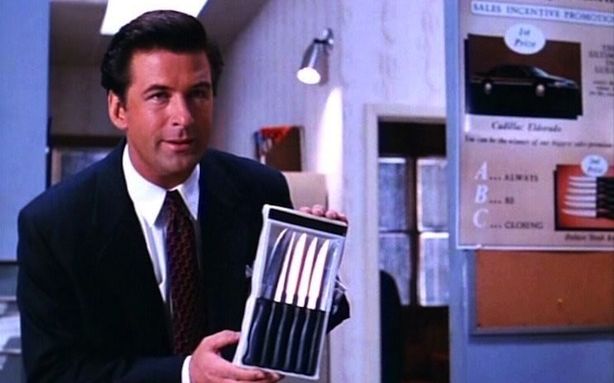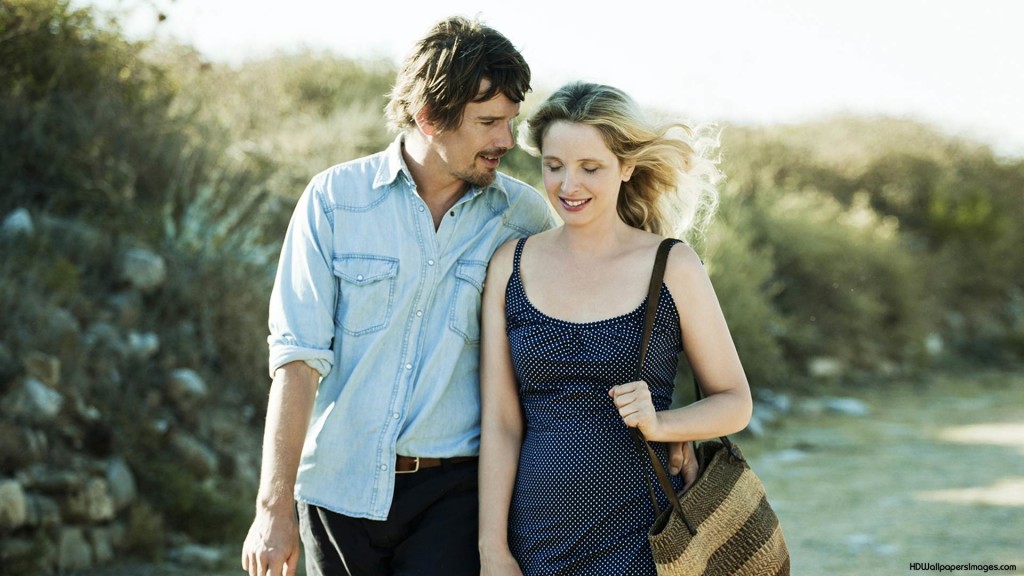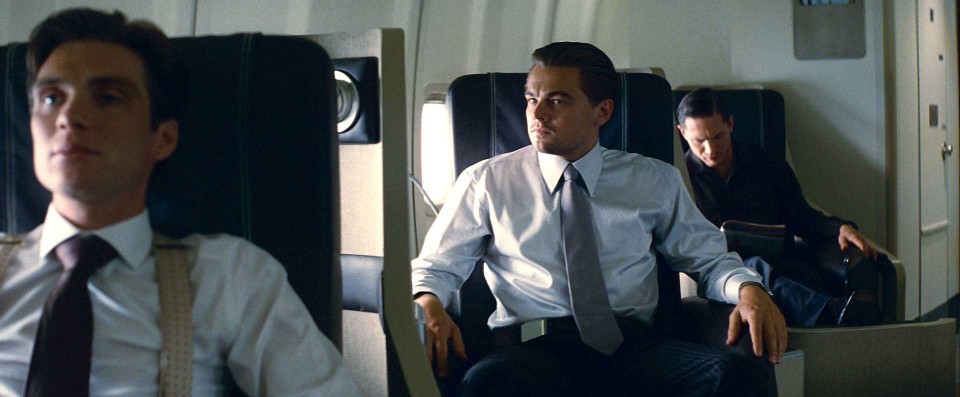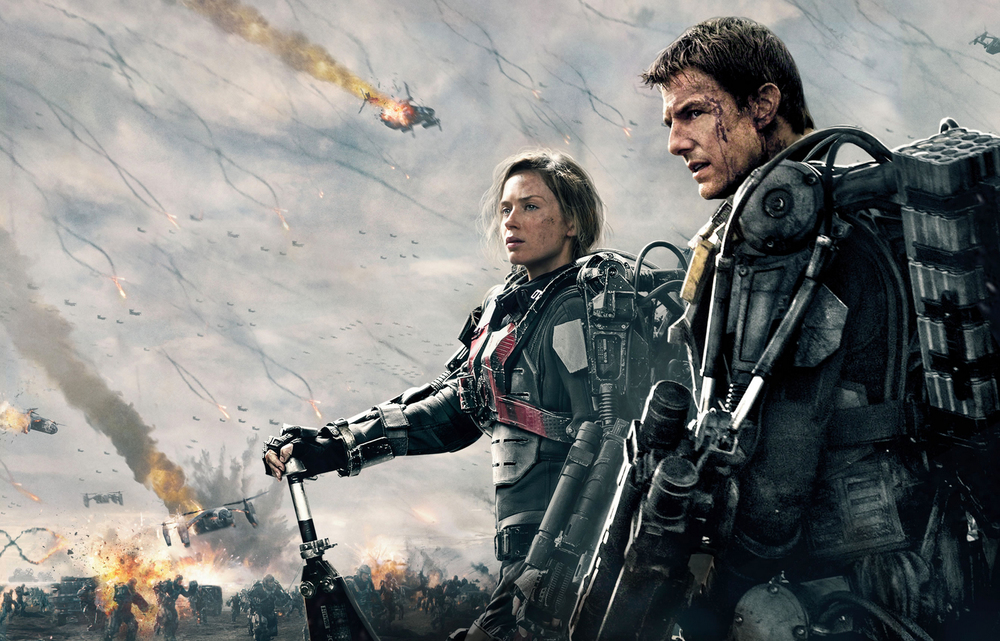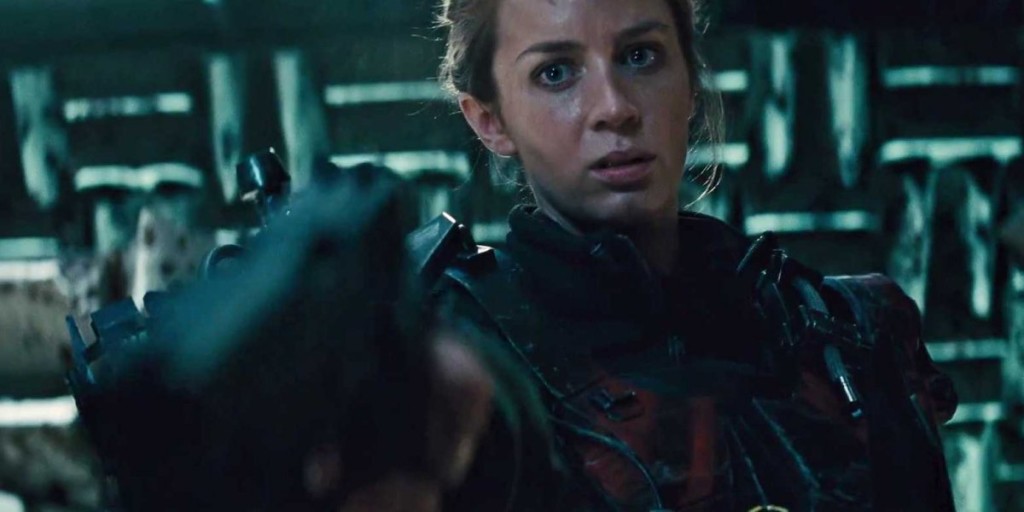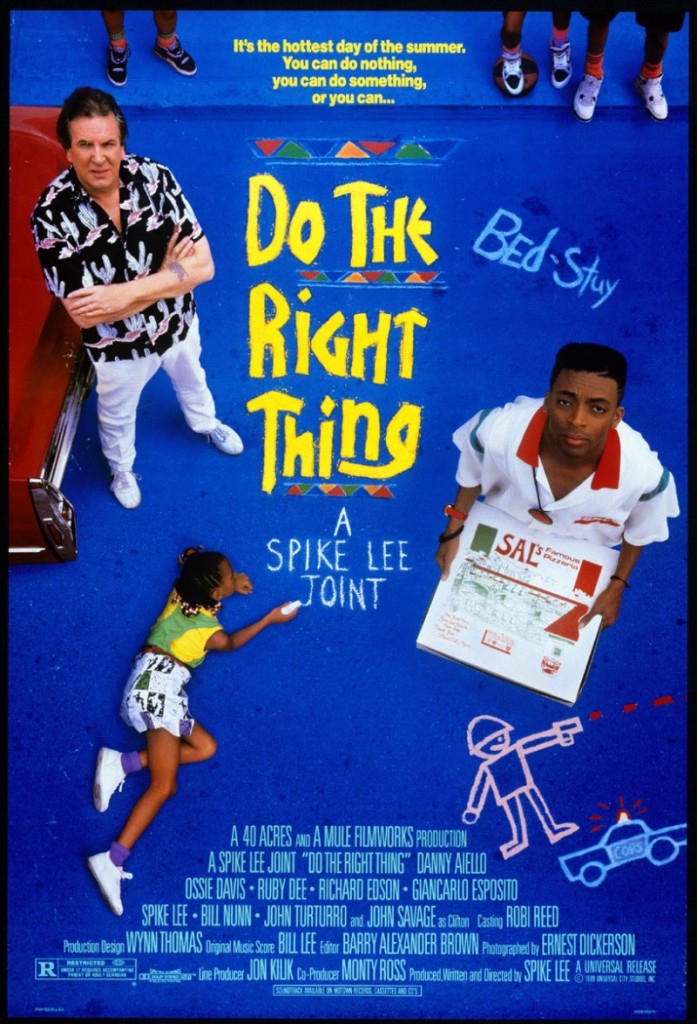Earlier this week, I broke down Do The Right Thing, with a focus on dialogue. I’m fascinated by dialogue as it continues to be one of the most elusive aspects of screenwriting. There are a small percentage of writers out there who are so gifted in this area that they don’t need any help. But chances are, you’re not one of them. And you’re never going to be. I’m sorry, but it’s the truth. People who were born with that gift are no different from basketball players with a 50 inch vertical. No matter how hard you work at it, you’re never going to have a 50 inch vertical.
But here’s the good news, just like there are a hundred NBA players who don’t have a 50 inch vertical, there are hundreds of screenwriters making a living who aren’t great at dialogue. Wanna know the secret to how they survive? They know how to put their characters in situations that create INTERESTING dialogue. Note the difference. “Great” dialogue is David Mamet. It’s creating something out of nothing like he did with Alec Baldwin’s monologue in Glengarry Glen Ross: “Cause the good news is — you’re fired. The bad news is you’ve got, all you got, just one week to regain your jobs, starting tonight. Starting with tonight’s sit. Oh, have I got your attention now? Good. ‘Cause we’re adding a little something to this month’s sales’ contest. As you all know, first prize is a Cadillac Eldorado. Anyone want to see second prize? Second prize’s a set of steak knives. Third prize is you’re fired. You get the picture? You’re laughing now? You got leads. Mitch and Murray paid good money. Get their names to sell them! You can’t close the leads you’re given, you can’t close shit, you ARE shit, hit the bricks pal and beat it ’cause you are going out!!!”
But you don’t need to be David Mamet to succeed. You just need to create dialogue that keeps us interested. And the best way to do that is to set your dialogue up to succeed. Give your characters a situation that will ALLOW them to say interesting things. Almost all of this happens long before your scenes are written. You do it, by and large, by creating characters that naturally interact with each other in dramatic ways. Below, you’ll find 10 approaches to scene-writing that, if done right, should improve your dialogue dramatically. 90% of your scenes (or more) should include one of the following set-ups.
HEAD-BUTTING
One of the most obvious ways to create interesting dialogue is through conflict – having your characters butt heads. How intensely they butt heads will depend on the characters, the story and the individual situation. The most obvious form of this is “arguing.” Characters let loose and rail against one another. Be careful with these scenes though. They typically only work after the pressure has been building up for a long time. If your characters argue right away (although there are exceptions to this) it will feel “on-the-nose” to the reader. And remember, full-on arguing isn’t the only “conflict” option. Sometimes a simple disagreement can be enough to power a scene.
TENSION
Tension is like conflict’s little cousin. It resides right underneath the surface. As such, it’s often a precursor to head-butting. Look at “The Heat,” with Sandra Bullock and Melissa McCarthy. Or Han Solo and Obi-Wan Kenobi in Star Wars. Or Columbus and Tallahassee in Zombieland. There’s tension between all these characters. Sometimes it bubbles up into full on head-butting, but usually it’s like an annoying little mosquito in a tent buzzing in the character’s ear. Needless to say, the pent-up frustration this tension causes always works its way into dialogue in interesting ways.
SEXUAL TENSION
One of the easiest ways to write scenes is to have some sort of sexual tension between your hero and the romantic interest. Sexual tension only works, though, until your characters seal the deal (with a kiss, or sleep together, depending on what type of story it is). Sexual tension can occur in a single scene, such as when Will Hunting tries to pick up Skylar at the bar in Good Will Hunting, or it can drive a multitude of scenes and even an entire movie, like it does in When Harry Met Sally.
SUSPENSE
Tease the reader with something they want, then don’t give it to’em right away. Here’s a scenario that shows the power of suspense. Let’s say our hero, Dan The Detective, shows up at a murder scene. Just before he walks in the house, he gets a call from his wife. She reminds him that he needs to pick up their son after school. She asks if everything’s okay. They discuss a few more things. He finally hangs up and goes inside. Boring right? Here’s how to use suspense. When Dan shows up, have a cop come up to him, face white, shaking his head, and tell Dan that what he’s about to see inside is unlike anything he’s seen in 30 years on the force. “You’re not ready for this,” he tells Dan. Dan, and us, start to go inside, but oh no, Dan’s wife calls! The two have the exact same conversation as before. This time, though, the dialogue feels more alive for some reason. Why? Because of our anticipation. Because we can’t wait to see what’s inside.
RESISTANCE
Resistance is when one character wants something and another character doesn’t want to give it up. One of the most famous examples of this happens in Raiders of the Lost Ark, when Indy goes to get the medallion from Marion. But guess what? She doesn’t want to give it up. In The Avengers, Black Widow tries to convince Bruce Banner to join the Avengers team. He doesn’t want to. In Fargo, Marge wants to get those license plate numbers from Jerry Lundergaard (who doesn’t want to give them to her because he’s secretly stolen the cars). If you want to double the power of Resistance in a scene, have both characters want something and have both sides resist. In the Alec Baldwin Glengarry Glen Ross scene mentioned above, Baldwin wants to give his damn speech. But nobody wants to listen. Also, everybody wants those golden Glengarry Glen Ross leads, but Baldwin doesn’t want to give them away. Resistance is a powerful way to keep dialogue interesting and should be used in the majority of your scenes.
AVOIDANCE
Avoidance is when characters don’t talk about things that need to be talked about. You’ll use Avoidance most often with characters who’ve known each other for awhile. Girlfriends, boyfriends, husbands, wives, family in general. As we all know, people in any relationship get to a point where they’d rather bury their problems than deal with them. When these people talk to each other, you can feel their words dripping with subtext. One need only sit at a family dinner to know how to write one of these scenes. There are usually many things that people are thinking that they’re not saying for one reason or another. Often, they’ll talk about anything else to fill the silence.
CHARACTER DRAMATIC IRONY
Dramatic Irony is a fancy way of saying “someone’s got a secret.” So all you’ve gotta do is write a scene with two characters, where one of the characters is keeping a secret from the other. In other words, almost every scene from Breaking Bad. Walter is keeping from his wife, his kid and his brother-in-law, that he’s a drug dealer. So whenever he has conversations with them, we’re drawn in. It can also be scene specific. In Inception, when Cobb approaches Robert Fischer (once he’s inside Robert’s mind), Cobb’s secret is that he’s trying place information inside Fischer’s mind. Dramatic Irony scenes tend to be the most interesting, however, when it’s the “bad guy” who has the secret. Because in these cases, we’re worried for our hero’s safety. So in Die Hard, when John McClane meets Hans Gruber up on the roof and Hans pretends to be a hostage, we know Gruber’s secret, and are terrified it’s going to result in our hero’s death.
STORY DRAMATIC IRONY
This second version of dramatic irony is the famous Hitchcock example of a bomb under the table. It occurs not when the characters keep secrets from each other, but when the movie keeps a secret from its characters. You’ll see this in horror movies a lot. Imagine a happy couple enjoying a hike through the forest. Chances are, their conversation is going to be pretty boring. But let’s say at the beginning of their hike, we cut to deep in the forest where a crazed maniac with an axe is watching them. When we cut back to them talking, it’s going to be a lot more interesting, isn’t it? We’re worried for them and want them to find out about the psychopath.
COMEDY
One of the ways to make a scene interesting is to make it funny. Have the characters talk about funny things. Seth Rogen and James Franco talking about joints in Pineapple Express. Or in a romantic comedy, when the characters first start hanging out together. This Honeymoon Period should contain a lot of funny dialogue. But beware of resting on comedy alone to sell a scene. If you’re just trying to make your characters say funny shit, we’ll feel the pointlessness of the scene and start to get restless. Often, comedy should be coupled with one of the other options I’ve listed. For example, a lot of the humor in The Hangover doesn’t come from Alan (Zach Galifianakis) and Stu (Ed Helms) just trying to say funny things. It comes from the fact that there’s so much tension between them, from them always butting heads. Also, it should go without saying that if your script is heavily dependent on comedy scenes, you need to be sharp, witty, clever, and funny. This may seem obvious, but I’ve read upwards of 200 amateur comedies where I didn’t laugh once.
PHILOSOPHY
These scenes involve characters talking about fascinating shit. The scenes’ strength rests on how compelling that shit is. Have you heard of something cool you’ve never heard anybody else discuss before? Have you thought of something crazy that nobody else has thought of? Use your characters to introduce these ideas to the world. Potential subjects include God, UFOS, death, life, conspiracies, existentialism, philosophy. These scenes should contain the kind of dialogue that if someone were sitting nearby in a coffee shop, they’d drop what they were doing to listen in. Richard Linklater has become famous for this kind of dialogue in his Before Sunrise movies, Slacker and Waking Life. Woody Allen incorporates it into his scripts as well. It should be noted, however, that this dialogue is really hard to pull off. Most people who think they have interesting thoughts about the world just rehash the same stuff we’ve heard in a hundred other movies (or on the internet). Sure, when it’s done right, we get Before Sunrise. But when it’s done badly, we get Scenic Route. What’s Scenic Route? Exactly.
EXPOSITION SCENES
I’m including these scenes for one reason – because I don’t want you to write them. You should try to avoid, with all your might, writing scenes that are solely dedicated to exposition or backstory. Why? Because exposition and backstory are boring. Instead, break your exposition up into pieces and hide it inside all the other types of scenes I’ve mentioned. I admit this becomes harder to do for fantasy and sci-fi scripts though. With these films, there’s so much more information that needs to be given to the reader, that it’s tempting to write a scene that takes care of all of it. In these cases, just make sure that the exposition is really freaking interesting, like when we learn about the matrix in The Matrix. But I’m telling you, if you have more than even one of these scenes in your script, your reader’s already getting bored.
IN SUMMARY
When I read bad scripts, it’s often because there’s no conflict, no tension, no suspense, no dramatic irony. I’ve actually read hundreds of scripts that didn’t have a SINGLE scene with any of these things in them. You’d think that just by accident you’d write one of these scenes. Guys, these are the cornerstones of dramaturgy. You have to learn them. Now go through your current script. Make sure almost every scene is doing one of these things. And don’t be afraid to stack them. You can have scenes with sexual tension and dramatic irony. You can have scenes with tension and suspense. Get creative. Have fun. And most importantly, use these tools to elevate your dialogue.
Genre: Sci-fi
Premise: A soldier defending the earth from aliens finds himself reliving the last day of an impossible-to-win battle over and over again. Eventually, he begins to use this power to improve his fighting skills, in hopes of doing the unthinkable, leading his army to victory.
About: Maybe someone can clear this up for me. Does screenwriter D W Harper exist? An internet search brings up scant details (repped at CAA – he’s written a few in-development projects around town). Whenever a no-name comes out of nowhere and writes a script this good, my Spidey senses start tingling. A big writer known for another genre using an alias maybe? Furthermore, Harper, who scripted the draft of this script that sold for a million bucks (then titled “All You Need Is Kill”) is no longer in the credits for the film. Instead, Christopher McQuarrie leads the writing credit pack. For an idea this unique, you’d think that the original writer would obtain some credit, but I suppose not. Expanding the mystery, “Harper” has been chosen by Ridley Scott to script his dream sci-fi project, Forever War. So I don’t know what’s going on. But anyway, this is the original draft that sold and got everyone excited, before any writers came on to do rewrites. The film is directed by Doug Liman (The Bourne Identity), stars Tom Cruise and Emily Blunt, and comes out this June.
Writer: D W Harper (based on the novel “All You Need Is Kill” by Hiroshi Sakurazaka)
Details: 1st draft (4/1/2010)
I honestly didn’t think they’d ever make this movie. The action described on the page was unlike anything I’d seen before. One guy is fighting like hundreds of aliens at once. Repeatedly. I’m no visual effects artist, but each word I read felt like one of those Fourth of July sparklers. Except instead of sparkles, there were dollar signs shooting out. Maybe they’re funding this thing with bitcoins? I don’t know.
It also seemed a little over-concepty for Hollywood. A movie about aliens attacking earth is common. A time travel movie is common. But this script went ahead and bundled the two together. Typically when I run into scripts like this, or try and push scripts like this up the ladder, producers say the same thing – “There’s too much going on here.”
But All You Need Is Kill is a testament to how good writing can overcome this complaint. Simply put, if you write something good, it doesn’t matter if it breaks rules.
20 year old Cage (believe it or not, this is the role Cruise will play, no doubt rewritten) is a grunt soldier in a future where aliens have invaded earth and are systematically taking down continents one by one. They’ve destroyed all of North America, leaving Cage and the rest of his army to try and hold South America.
But Cage’s regiment is kinda fucked. When they go out to fight (in a battle known as “The Battle of Ruby Tuesday”), they get smoked by an alien force that mysteriously seems to know where they’re going to be before they do. As such, Cage and his army are slaughtered. That’s right, our hero dies within the first 15 minutes of the film!
Sora of. Seconds later Cage wakes up. He realizes it’s the day before the battle. Was what he just experienced a vivid dream? No. Cage finds himself living the exact same day over again, right up until the battle, where he and his group get slaughtered again. This keeps happening every day. For some reason, poor Cage is stuck in a loop.
The only thing Cage looks forward to is watching fellow soldier Rita (aka “Valkyrie One”), a recluse badass, rip hundreds of aliens to pieces every battle, even while all the soldiers around her die quick deaths. How is it, Cage wonders, that Rita is so much stronger than everyone else?
Cage finally gets the courage to hike over to Rita’s place before the battle, and over the course of many reboots, tells her his story, that he’s looping. She informs him that she’s also a looper, but has been doing so for way longer than him. Happy to have someone who understands her, Rita befriends Cage and starts training him. Together, they become an unstoppable force on the battlefield.
But what does winning the battle matter if they just keep looping back to the beginning? The two will have to figure out how to stop the loop, a process that involves killing the aliens that may have inadvertently given them the power to loop in the first place.
First off, if you write action scripts and you can get a hold of this script, read it. This is one of the best scripts as far as action-writing I’ve read.
Almost all the lines in the battles are two lines or less. Harper uses capitalizing to great effect to help key us in on important images (i.e. “TENS OF THOUSANDS OF OTHER JACKETED INFANTRY”). Harper uses iso-description to keep our eyes moving down the page. This means isolating action or subjects via a single line…
UP THE BEACH
IN THE SKY
OUT TO SEA
The writing favors flow over heavy description, yet still manages to pack a lot of information in it (“Worse yet, TWO MIMIC RUNNERS have detached and GIVE CHASE. YONABURU FIRES, taking one down, but the other is closing in.”). That’s one of the hardest things to do in sci-fi and fantasy. Your world is so unique that you can’t help but try and describe it all. But describe too much, and your action gets bogged down, which is the exact opposite of what you want to do with action. Harper has mastered this balance.
The script plays around with convention too. How bout meeting your man character, only to have him die within the first scene? Or how bout the “meet-cute” scene between our leads. Rita comes over as Cage is dying on the battlefield and tries to help him? Nope. She tells him she’s going to let him die here and then steals his battle-gear battery. Sounds like Harper got that meet-brute idea from a little screenwriting book I know.
I actually wanted to talk about the love story here because after watching the trailers for the film, I can see that they’ve changed it. In the script, Cage watches Rita from afar the whole time. She’s this unapproachable superstar fighting badass. She’s unattainable. A dream. It isn’t until the last 40 pages or so that the two start interacting.
Now normally I don’t like this. The traditional approach is to have your leads meet by the end of the first act at the latest (and in rare circumstances, by page 45), and then play around with their relationship over the rest of the story (guy gets girl, guy loses girl, or girl gets guy, girl loses guy, they get together again, lose each other again, you get the idea). But with All You Need Is Kill, the whole time looping element made that approach irrelevant. There was enough going on that we didn’t need to jump into the romantic relationship right away.
However, it appears that the studio didn’t agree with this approach and they’ve had the two get together a lot earlier. I understand why they did this. They want their male and female leads around each other. They want interaction. And to be honest, doing it the way they do it now would make me nervous too. Because it’s different. And nobody in this business likes to be too different. Actually, that’s not true. They like “different” in a spec because they’re tired of seeing the same old thing. But they haven’t invested 300 million dollars in a spec. So when actual money gets involved, they start worrying about all these “differences” and tend to mold the script back into something more traditional. This is often why good scripts become bad movies. Fear.
So I’m guessing that’s one of the things McQuarrie was asked to do. Move the timeline of the love story up. Have them get together earlier. And probably spend more time on that relationship in the film.
It looks like they also brought in an outside storyline. In the script, everything’s pretty contained. We’re either in the barracks or on the battlefield. Everything takes place in these two locations. In the trailer, there seems to be some government interference. We’re driving outside on roads, getting chased. There’s none of that here.
My guess is that the studio also got worried about the “too contained” aspect. When you’re plopping a film down in the middle of summer, it’s got to feel as big as possible. And even though the battlefield scenes look great in “Kill,” adding more locations gives the movie a “bigger” feel. It gives the studio more variety in the imagery, which they can use in the promotion.
I don’t know if that’s why they added that storyline or not, but that’s what it feels like to me.
All You Need Is Kill is one of these new breeds of spec sales where producers know how weary studios are of buying naked properties (spec scripts not adapted from anything). So they offer them a property that IS based on something, just not anything popular, to sort of trick them. This way, both sides win. Writer gets to sell his spec script and the studio gets to say they bought intellectual property.
What does that mean for writers who are writing naked specs? Simple, you just have to write something better. You have to write something awesome enough that people are willing to take a chance on you despite your script not be affiliated with IP.
All You Need Is Kill is one of my favorite spec scripts and is always flirting with my Top 25. A lot of people have this script so with some asking around and/or Google searching, you should be able to find it.
[ ] what the hell did I just read?
[ ] wasn’t for me
[ ] worth the read
[x] impressive
[ ] genius
What I learned: Remember, suspense is the act of suspending an event. If you have your hero look inside a room, you can show the audience what’s in that room a second later, or you can wait a few scenes until the hero brings his friends back. THEN show us what’s in the room. By suspending the event, you’re keeping us curious. That’s what Harper does here with Valkyrie One (Rita). We see her from afar but never meet her. Harper SUSPENDS the eventual meeting between Cage and Rita because he knows how much we want to see it. Whenever you’re writing a scene, ask yourself, “Is there anything here I can suspend?”
If you search Google for movies with the best dialogue, you get a lot of familiar hits. Writers like Woody Allen, Quentin Tarantino, Richard Linklater, Charlie Kaufman, John Hughes and Aaron Sorkin. Some of these writers thrive on realism (Linklater), others on flash (Tarantino), but all of them have the gift of making you pay attention when one of their characters speaks. It’s an invaluable talent, and therefore quite frustrating if you’re born without it. As I’ve said before, I don’t think mediocre dialogue writers can ever become great dialogue writers. But I think mediocre dialogue writers can become good dialogue writers with a hell of a lot of work. It’s a matter of understanding the basics (come late into a scene, your characters shouldn’t speak “on the nose”) then putting your characters in the best position to say interesting things. That’s what too many writers overlook. They try to write great dialogue out of nothing, when great dialogue typically comes out of setting up the situation beforehand. Today’s script marked the arrival of an incredible new talent, Spike Lee. One thing everybody agreed on was that Lee hit out of the park with the dialogue in this script. I couldn’t agree more. Try watching this movie and turning away. Every time someone speaks, you want to hear what they have to say. Why? What magic potion is Lee using? No magic. Just tried-and-true dialogue-writing methods. In fact, even the naturalism in Lee’s dialogue is born out of an easy-to-learn lesson. I do want to highlight a couple of non-dialogue tips here too, but dialogue will be the focus. Let’s begin!
1) The power of character differences – Sometimes all you have to do to write great dialogue is put two different people in a scene and have them talk to each other. Use differences in age, differences in race, differences in political views, differences in class. That’s what gives Do the Right Thing so much of its great dialogue. The different races always see the world differently, which is what leads to all these conflict-heavy entertaining conversations.
2) Choose stories that hide your writing weaknesses just like you choose clothes that hide your body weaknesses – This is self-explanatory yet a lot of writers make this mistake. If you’re a flashy dialogue writer, write a movie that’s heavy on dialogue. If you’re not, avoid scripts like Do the Right Thing like the plague. Good writing can be as simple as staying away from the things you’re bad at.
3) Another way to develop character – My big takeaway from this script is that character development isn’t always about a character changing. It’s about a writer revealing more about that character over time to create the illusion of change. The drunk old man looks like a loser at first. But the more we learn about him, the more we like him. He even saves a kid from a speeding car later. So he doesn’t change as a person. But he changes in our eyes because we know more about him now than we did at first.
4) Add fuel to the conflict fire whenever possible – Remember, most great dialogue results from conflict. So you should look for any way to stoke that conflict. This script already has a ton of conflict because of all the racism. But Lee adds the WEATHER to make it even worse. In Do the Right Thing, it’s the hottest day of the year. People have less patience in hot weather. They’re more easily agitated. A simple argument can escalate quickly. Which is exactly what happens.
5) In One-Day stories, the weather can become a character – I realized that if your script takes place over one day, the weather can become a major character in your story. Here, it’s the heat. But in another movie, it can be the coldest day of the year. Or the rainiest. Or the day of a huge blizzard. When you have a movie that takes place over this short a period of time, pay attention to the weather, as the right weather choice can have a huge impact on the story.
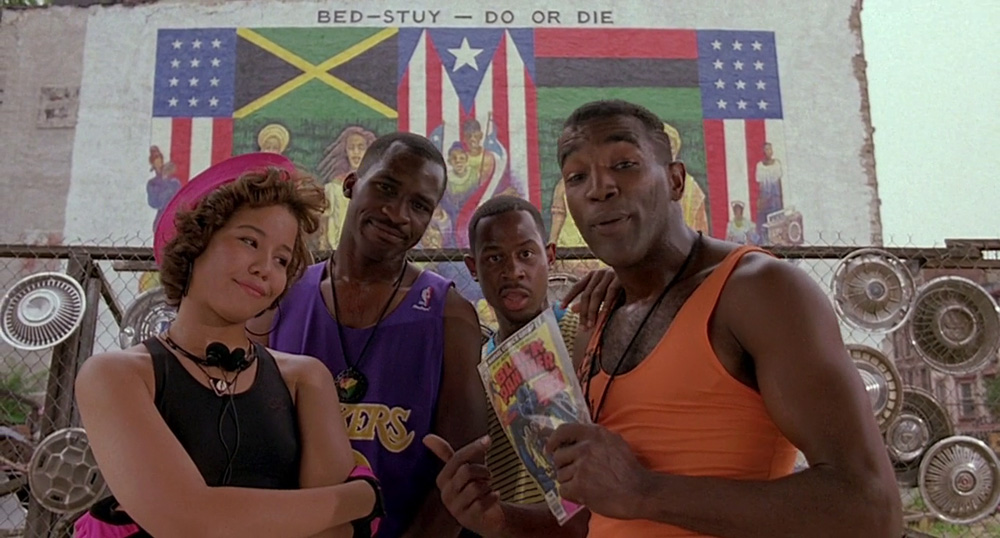
6) People on the same side don’t always agree – Even characters on the same side should disagree about things. Don’t assume that just because Sal and his son work together at Sal’s Pizza that they’ll have the same views about everything that’s happening. What I liked about Lee’s script is that Sal was respectful of others, whereas his son was racist. Sal wanted to help people. His son wanted them to help themselves. This lead to conversations between the two that were way more interesting (“Maybe we should get rid of this place, Dad.”) than if these two thought the same way. Remember, not every scene can be two people with hatred towards one another yelling for five minutes. Conflict has to live within your groups, not just outside of them.
7) Easiest way to write dialogue is to write what you know – Lee grew up with all these characters in his neighborhood. That’s why they all feel so real. Whatever people you grew up with, particularly the eccentric and most memorable, make sure you’re writing those people into your scripts. They’ll write the dialogue for you. Never underestimate the power of this simple tip (this is the “naturalism” tip I was referring to in the intro).
8) Theme allows for “pointless” dialogue – Here’s the thing with dialogue. Its main purpose is to push the story forward. The thing is, real life dialogue, the kind that’s free-flowing and crazy and fun to write, doesn’t push anything forward. It’s just people talking. Which means each time you write dialogue, you’re trying to write an oxymoron. The reason Lee’s dialogue is so good in “Thing” is because a lot of it isn’t pushing the story forward. It’s dialogue of the free-flowing crazy variety. So how is he able to get away with it? Easy. Lee has a strong theme in his film – racial tension in the city. When you write with a strong theme and keep the dialogue focused on that theme, you can get away with “rambling” dialogue, because the dialogue still feels relevant. What does four guys yelling at a man for stepping on his shoe have to do with the plot? Nothing. But the man who owns the shoe is black. And the man who stepped on the shoe is white. Therefore, this “pointless” dialogue-heavy scene feels relevant because this whole movie is about racial tension.
9) Variety in characters leads to better dialogue – One of the best things about Lee’s script is how different all the characters are. We have a weird radio carrying guy (Radio Raheem), we have an old drunk man, a man with a lisp, the mentally retarded guy, the African Pride Radio announcer, the troublemaking crew, the old “complainer” guys across the street. The more variety you have in your characters, the more interesting their conversations are going to be. Period.
10) As always, look for unique ways to evolve old phrases – This is where you really see the pros stand out. They take old well-known phrases and turn them into something we haven’t heard before. Sal doesn’t say, “I should kick your ass” to Mookie. He says, “If you were just a little bit taller, I’d kick you in the ass for what you’re thinking.”
BONUS TIP) Evolve phrases by utilizing character specifics – Notice how the above phrase is focused on Mookie’s height: “If you were just a little bit taller.” Lee uses this specific trait of Mookie’s to inspire Sal’s change of the line. It’s easy for you to do the same. For example, if you’re writing a rom-com where a woman is asking our main character (who’s a lawyer) how he knows some important piece of information, his reply might be, “I’d tell you but I’d have to kill you,” But everyone uses that line. So look at your options. What’s specific about our character? He’s a lawyer, right? So maybe the response is, “I’d tell you but I’d have to bill you.” That’s admittedly lame but you get the idea!
***NOTE: MONDAY REVIEW IS BELOW!***
***NOTE: AMATEUR OFFERINGS POST IS UP – SCROLL DOWN!***
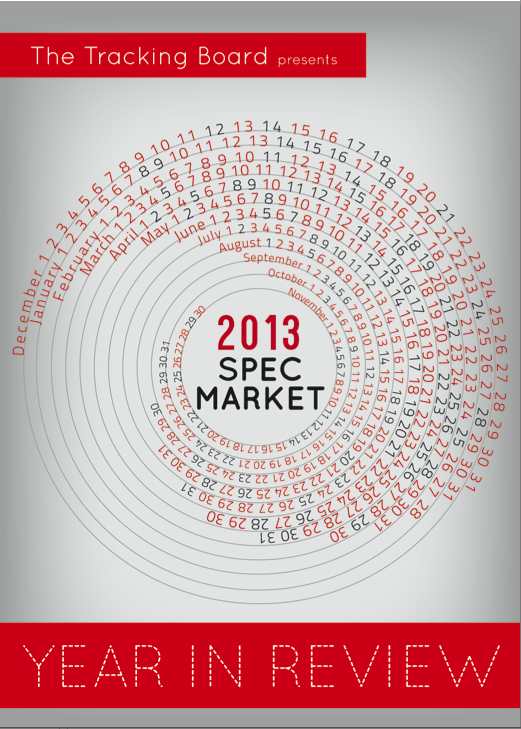
Hey guys, wanted to divert your attention to something really cool. My friends over at The Tracking Board just came out with a full 300 page book tracking all the spec scripts from last year. Not only that, but the book goes into which managers sold the most scripts, which agents, which studios bought the most scripts, which genres were the highest sellers. If you want to know what’s selling, who’s repping what, and who’s buying, you need to download this book now. The best part about it is it’s FREE.
Also, for those of you who aren’t yet members of The Tracking Board, they’ve agreed to give a 25% discount to all Scriptshadow readers, bringing the yearly membership down to $59.25. Here, you’ll be able to get all this information in real time, allowing you to track trends, and more importantly, figure out who’s selling and buying what, so you can target your query letters to the agents and producers who make the kinds of movies you write. This is the site I use every day to track the industry. So I highly recommend it. The offer is good through Sunday!
Genre: Dystopian/Sci-fi
Premise: (from IMDB) In a world divided by factions based on virtues, Tris learns she’s Divergent and won’t fit in. When she discovers a plot to destroy Divergents, Tris and the mysterious Four must find out what makes Divergents dangerous before it’s too late.
About: The next attempt at a YA novel franchise debuted this weekend to about 55 million dollars. It wasn’t quite Hunger Games numbers, but it’s probably enough to ensure a full trilogy. Divergent was adapted by Evan Daugherty, who broke out a few years back with a screenplay contest win that eventually led to a 7 figure sale and ended with the hit film, Snow White and the Huntsman. Possibly because Kristin Stewart starred in that film, the godmother of the female-driven YA franchise, the Divergent folk brought Daugherty in to script another success story. Coming in to give the script some female sensibility was Vanessa Taylor, who wrote the Meryl Streep film, Hope Springs.
Writer: Evan Daugherty and Vanessa Taylor (based on the novel by Veronica Roth)
Details: 139 minutes!
When you invest in a franchise these days, you don’t have any choice but to cram it down the world’s throat. So competitive has this business become, that it’s better to blanket the world with advertisements and make them HATE your movie, than display a respectful number of billboards and remind everyone that you exist. Hate is irrelevant. What’s important is that they KNOW.
Divergent is the latest film to get the “blanket your eyeballs” marketing treatment. And it’s unfortunate. Cause I’m one of these people who’s been wishing for the death of the female-driven YA novel franchise. I shall not fib. I came to Divergent ready to split the movie in two and send the halves back to the literary world, where they would remain hidden inside the minds of whoever picked them up. But that didn’t happen. My reaction is more…divergent than expected.
The “Divergent for Dummies” plot breakdown goes something like this. It’s Chicago at some point in the future, after war has decimated the world. In order to make sure this doesn’t happen again, the good people of Chi-Town have divided their population into five factions. These factions have names, but they’re way too complicated for the sake of this review. So we’ll just call them the Borings, the Smarties, the Exercisers, and two others that are irrelevant to the plot.
Tris is our hero. She’s part of the Borings, the unofficial ruling group of the city. Her life is dedicated to doing boring things like helping others. But her Choosing Moment is coming up, where she chooses the faction she’ll join for the rest of her life. Why someone is born into a faction but has to choose a faction is beyond me. But that’s this world for ya.
Luckily, it gets more complicated. Before you choose, you get tested to find out which faction you’re a part of. After you find out, you’re supposed to choose that faction. But you don’t have to. You can still choose any faction you want. Which begs the question – why the hell do they need this test in the first place?
It probably has something to do with what happens during Tris’s test. Tris isn’t picked for ANY of the factions. She’s a DIVERGENT! Which is a huge no-no in this society because Divergents can’t be controlled. Luckily, the tester decides to keep this a secret. So Tris is safe. For now at least.
I say “for now” because Evil Kate Winslet, a part of the Smarties Faction, is set on rooting out all the Divergents and killing them. To think, it was only a few years ago she was flying with Jack on the front of the Titanic.
In a surprise move, Tris joins the Exercisers on Choosing Day, who are known for NEVER WALKING. The Exercisers are the chosen defenders of the city, which means Tris has decided to train and become a soldier.
Towards the end of her training, Tris learns of a plan by the Smarties to take over the city, killing the only faction standing in their way, the Borings. The worst part? The Smarties are going to use mind-control on the Exercisers to do their dirty work. The irony! Tris’s current faction is going to kill her old faction! Ah but remember, Tris is immune to mind-control. She’s a Divergent. The question is, is that enough to thwart this plan and save the city?
If you should ever stumble into a showing of Divergent, you may feel like you’re in an alternate dimension. Soon after you sit down, you’ll be bombarded with a dozen scenes of the Exerciser Faction running around, smiling, high-fiving, jumping, cheering, all to an annoyingly catchy tribal beat. It’s one of the weirder things you’ll ever experience in a theater.
But here’s why Divergent survives the nuclear bomb that sent it to its dystopian reality in the first place. This story is almost exclusively focused on character development, and it does a pretty good job of it. Tris is confused about her place in the world, not unlike all of us after our institutionalized years, and therefore must find herself. She joins a faction where she’s the underdog, and that choice is the main reason why this script works.
Like I’ve told you guys in the past, an underdog character goes a long way. And Tris is so far down this ladder (everyone tells her she’s toast – she’ll never make it through the training) that you can’t help but root for her. I loved how they made the odds so impossible (always make your odds impossible!) that you’re never sure if she’s going to succeed or not.
Now because this movie was about character development, much of it is Tris being challenged, having to overcome her fears and her flaws. The problem was, they got a little carried away with that. I wasn’t counting, but 70-80 minutes of Divergent is dedicated to training. I kept waiting for a more concrete story goal to emerge (a danger outside the city they would have to battle perhaps?). But that never came. So I wondered where this was all going.
When I realized this wasn’t The Hunger Games, with its big fancy goal of the Games at the end, but about a secret uprising, I found myself fascinated by the choice. Because it’s the much more dangerous choice of the two. With The Hunger Games, your audience is always looking forward to that juicy goal of trying to win the games.
Divergent’s plot is happening underneath the surface, not unlike The Shawshank Redemption, where the main plot is being kept from the audience. The reason that’s a dangerous move is because it’s easier for the audience to lose interest. If they can’t see the endgame, what’s motivating them to stay interested? Audiences usually need that clear finale (those “Hunger Games” if you will) to stay committed. Think about it. If I told you we were going to your favorite restaurant at the end of the day, your whole day would be great. You’d be so excited for later. If there was no restaurant visit, however, your day would feel kind of boring. There’d be nothing special about it.
This finally helped me realize why the trailers felt so confusing – why every time I saw them I didn’t know what the movie was about. They couldn’t reveal what the movie was about because the whole plot is the third-act twist! It’s the secret uprising plot that was invisible for 2 hours.
Did this work? Sort of. The twist itself was kind of cheesy. We have serum-centric mind control going on, and whenever you throw in serum-centric mind control, I’m sorry, but it’s going to be cheesy. The thing was, you liked Tris so much, you wanted to see her win. You wanted to see her take down Evil Kate Winslet.
I give it to the Divergent writers for keeping the plot focused, despite its long run time and all the weird things they had to include from the novel. The training was long, but they constantly reminded us how important it was. That’s what you have to remember when it comes to adaptations. The writers have to find ways to make things work even though they know they don’t work. If you’re lucky, someone will be paying you to do that some day.
I mean why the hell does this Exerciser Faction never walk? Why are they always cheering? And the biggest question of all – WHY THE HELL DOES THE TRAIN IN CHICAGO NEVER STOP??? There’s no way to get on the train in this movie unless you run and jump on it.
You’d think that one of the many engineers in the city would figure out a way to solve this problem (I hear brakes still work in the future). It was weird stuff like this that gave Divergent a schizophrenic feel. But Daugherty and Taylor found a way to include just enough of it to sell the world, but not so much that we rolled our eyes (well, okay, I rolled my eyes a couple of times).
Did Divergent benefit from extremely low expectations? Yes. Am I recommending you all go out and see it? No. But if you’re walking around on a Saturday afternoon with nothing to do and you can get a matinee ticket, you may find Divergent not nearly as bad as you’d expect it to be.
[ ] what the hell did I just see?
[ ] wasn’t for me
[x] worth the price of a matinee ticket
[ ] impressive
[ ] genius
What I learned: There should always be a sense of doubt that your main character will succeed. If there isn’t, why would we care? There would be nothing to worry about.

